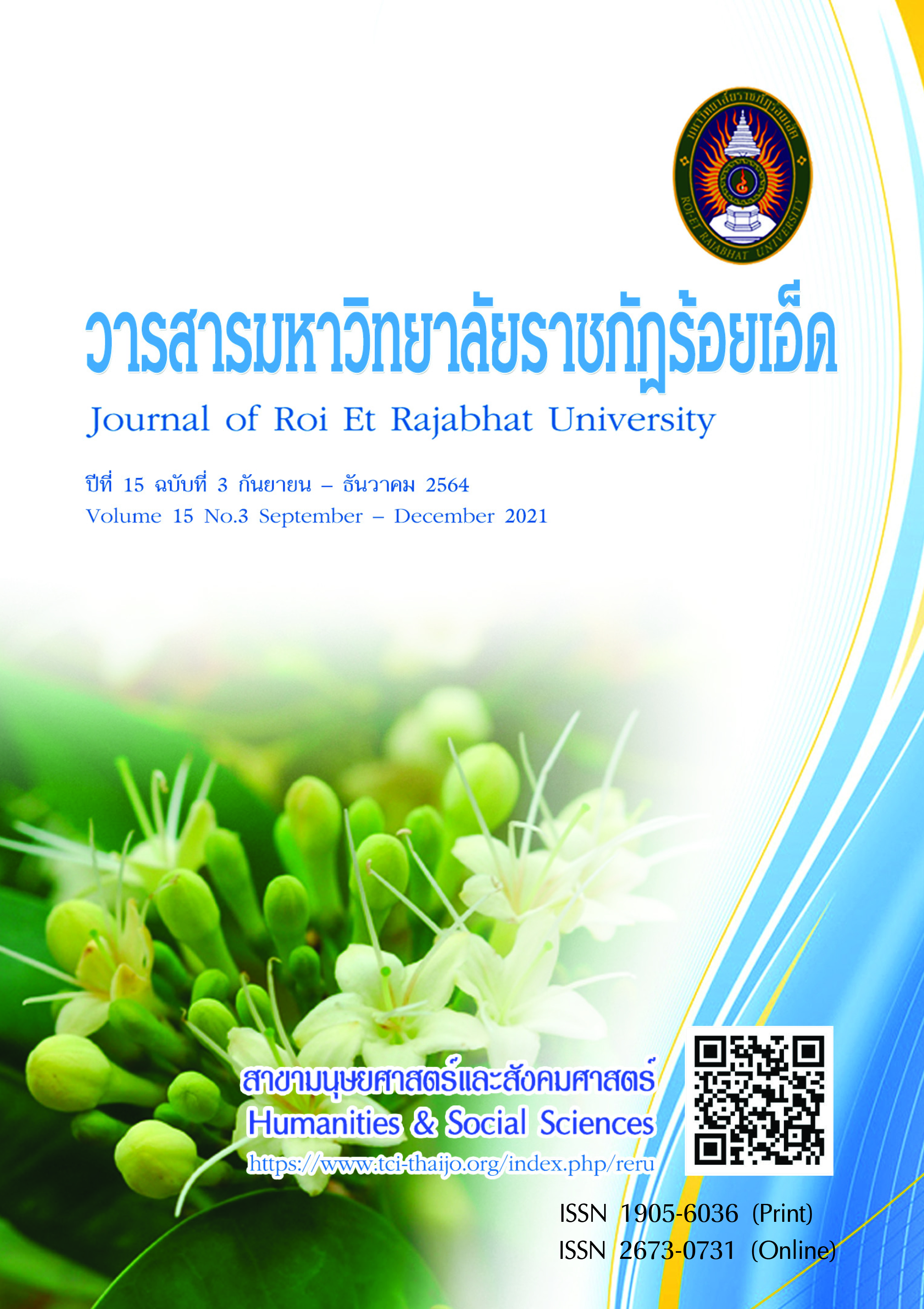A study of innovative learning and information technology for education and student learning with the Active Learning process
Keywords:
Learning outcomes, Innovation and Information Technology for Education, Active learning processAbstract
The purposes of this research were 1) to develop learning activities, innovation, and information technology for education and student learning through the active learning process; 2) to comparison of learning achievement between before and after running the activity; and 3) to study the learners' satisfaction. The sample consisted of 29 first-year undergraduate students in the English program, Faculty of Education, Sakon Nakhon Rajabhat University. Research instruments were an activities of learning management on innovation and information technology for education and learning of the 1st year undergraduate students through active learning, twenty items of the achievement tests, and a questionnaire of learning activities satisfaction. The statistics used in this research were the mean, standard deviation, and the t-test (dependent sample). The results of the research revealed that: (1) the learning activities management plan on innovation and information technology for education and learning of the 1st year undergraduate students through active learning consisted of 9 learning plans which are 1) diversity of technology 2) innovation 3) educational technology 4) teaching materials 5) museum teaching materials 6) Teaching and writing with a pen with cutting head of teaching media 7) Teaching media and content collection by making a large book 8) Visual media, and 9) Visual media and materials. Each learning activities plan consists of 3 steps of active learning activities which are 1) interest stimulation 2) group activity, and 3) discussion and conclusion which the learning plan is suitable at a high level with an efficiency of 83.64 / 88.28 and meets the specified criteria. The effectiveness index of learning activities was equal to 0.7155; (2) the mean score after learning achievement higher than before learning with statistically significance at the .05 level; and (3) the students satisfaction on learning activities in overall were at the highest level.
References
กิตติยา อาภาศรี. (2555). การพัฒนาแนวคิดหลักเรื่องการเคลื่อนที่แนวตรงของนักเรียนชั้นมัธยมศึกษาปีที่ 4 ด้วยชุดกิจกรรมการเรียนรู้แบบบรรยายประกอบการสาธิตเชิงปฏิสัมพันธ์. วิทยานิพนธ์ วิทยาศาสตรมหาบัณฑิต สาขาวิชาวิทยาศาสตร์ศึกษา. อุบลราชธานี: มหาวิทยาลัยอุบลราชธานี.
นรินทร์ วงค์คำจันทร์. (2558). การศึกษาความคิดสร้างสรรค์ทางวิทยาศาสตร์และผลสัมฤทธิ์ทางการเรียนวิทยาศาสตร์ของนักเรียนระดับชั้นมัธยมศึกษาปีที่ 2 ด้วยการจัดการเรียนรู้แบบ active learning. วิทยานิพนธ์ ศิลปศาสตรมหาบัณฑิต สาขาวิชาการสอนวิทยาศาสตร์. กรุงเทพฯ: มหาวิทยาลัยรามคำแหง.
ไพฑูรย์ ศรีฟ้า. (2557). เอกสารประกอบการอบรมและบริการวิชาการแก่สังคมเรื่องการผลิตเอกสารตำรา สื่อแบบความจริงเสมือน (AR) ด้วยเทคโนโลยีออรัสมา (AURASMA) เปิดอ่านด้วยอุปกรณ์ประเภท Smart Devices. กรุงเทพฯ: มหาวิทยาลัยเกษตรศาสตร์.
ฟาตีฮะห์ อุตส่าห์ราชการ. (2558). รูปแบบการเรียนการสอนแบบ Active Learning เพื่อพัฒนาแนวคิดเชิงวิทยาศาสตร์ เรื่องคลื่นไหวสะเทือน. วิทยานิพนธ์ วิทยาศาสตรมหาบัณฑิต สาขาวิชาฟิสิกส์ศึกษา. ชลบุรี: มหาวิทยาลัยบูรพา.
รสิตา รักสกุล. (2557). สัมฤทธิผลของการจัดการเรียนการสอนแบบบูรณาการโดยใช้ Active Learning. วิทยานิพนธ์ ครุศาสตรอุตสาหกรรมมหาบัณฑิต สาขาวิชาคอมพิวเตอร์และเทคโนโลยีสารสนเทศ. กรุงเทพฯ: มหาวิทยาลัยเทคโนโลยีพระจอมเกล้าธนบุรี.
สำนักเลขาธิการคณะรัฐมนตรี. (2555). รายงานประจำปี 2555. กรุงเทพฯ: สำนักเลขาธิการคณะรัฐมนตรี.
Downloads
Published
How to Cite
Issue
Section
License
บทความที่ได้รับการตีพิมพ์เป็นลิขสิทธิ์ของวารสารมหาวิทยาลัยราชภัฎร้อยเอ็ด
ข้อความที่ปรากฏในบทความแต่ละเรื่องในวารสารวิชาการเล่มนี้เป็นความคิดเห็นส่วนตัวของผู้เขียนแต่ละท่านไม่เกี่ยวข้องกับมหาวิทยาลัยราชภัฎร้อยเอ็ด และคณาจารย์ท่านอื่นๆในมหาวิทยาลัยฯ แต่อย่างใด ความรับผิดชอบองค์ประกอบทั้งหมดของบทความแต่ละเรื่องเป็นของผู้เขียนแต่ละท่าน หากมีความผิดพลาดใดๆ ผู้เขียนแต่ละท่านจะรับผิดชอบบทความของตนเองแต่ผู้เดียว





